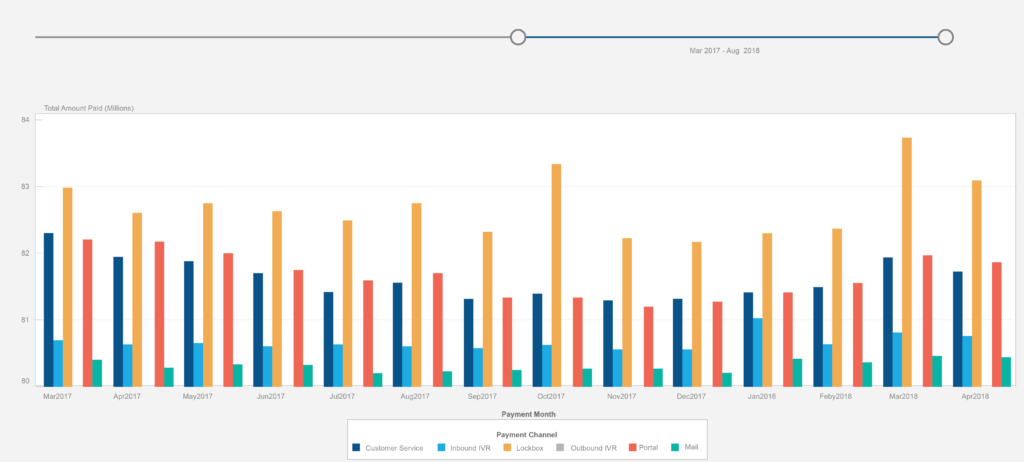July 31, 2018
What to Look for in an RCM Dashboard

You’ve probably heard the analogy comparing revenue cycle dashboards to the ones you find in a car, and you know what? As vehicles get more sophisticated, the analogy only becomes more true.
These days, if you look at a car’s dashboard, you’ll find GPS, tips on avoiding traffic, and tire pressure readouts, and that’s just on base models. The modern automobile dashboard has evolved into an information hub that helps you optimize your transportation needs while making sure you understand what’s going on in your vehicle at all times. If you’re still just checking the odometer and waiting for a check engine light, you’re probably missing out on the true purpose of your dashboard.
The same goes for your revenue cycle dashboard. We’ve seen amazing evolution over the last few years, and if you aren’t looking at your reporting and data for all they can be, you’re missing out on opportunities to do more with less and leverage that data to drive the smart decisions your leadership craves.
The Power of Transparency
Easily accessing the data insights you need in the format you need them is more than a nice bonus — it’s critical to some of your most pressing initiatives. Take patient engagement, for example.
Communication sits at the heart of true engagement, but without clear, accessible insight into your communications, you could be wasting a lot of time, effort, and opportunity. Data tools such as A/B testing, design analytics, workflow automation, as well as scoring and segmentation, can help you properly segment your patients and encourage desired outcomes through strategic communications. This information can be rather complex, so unless you have access that’s structured according to your specific needs, it might be difficult to make sense of everything you discover.
The right dashboard will do most of the heavy lifting and allow you and your team to learn from the data you collect so you can improve financial outcomes, clinical results, and the patient experience overall.

Understanding the Potential of the Dashboard
The advantages of the right dashboards and data insights are a benefit many hospitals around the country already understand.
In 2015, a large, nine-hospital system with 80 locations throughout northeast Indiana and northwest Ohio found itself facing increased self-pay collections on top of new 501(r) regulations regarding financial assistance policies and consistent screening before Extraordinary Collection Actions (ECA). System leadership knew that leveraging credit scores was an option to improve collections but, as a not-for-profit system, was concerned about soft hits on a guarantor’s credit as well as potential negative publicity.
To get over that hurdle, leadership decided on our predictive demographic model to enhance its self-pay service and implement effective predictions of each of its patient’s likelihood to pay. This decision also opened up critical insight into patient payment behaviors through a user-friendly dashboard, which also enabled efficient account management.
Essential Dashboard Elements
We’ve seen many of these situations and understand what makes a dashboard that meets today’s revenue cycle needs.
- Capabilities: This wins out above other elements because if a decision-support dashboard doesn’t align with RCM needs at your facility, things like implementation and support diminish in importance. Ideally, a dashboard’s capabilities should be customized to your needs.
- Ease-of-use: You lose the impact of transparency if accessing the data you need is too difficult. Information should be available at a glance, and dashboards should be easy to use and intuitive to make sure your revenue cycle is functioning efficiently.
- Insights into quality issues: Data quality concerns are a fact of revenue cycle life, and the right dashboard will inform you of quality problems as soon as they happen.
- Extras: The complexity of today’s patient communication expectations demands the ability to go beyond the basics. Look for features like managing communication campaigns, daily return files, quarterly reviews, and optimized performance that enhances your team’s effectiveness.
As you examine your options, remember that the right RCM dashboard will be a seamless addition to your processes and an invaluable team member that will turn your data into effective communications and provide you with analysis that enables enhanced patient connection and drives optimal outcomes.
The RevSpring Advantage
We put data to work for you and your customers. Our at-a-glance dashboards help health systems quickly find and close workflow gaps that are costing time, resources, and hard dollars. RevSpring’s comprehensive patient engagement solutions allow hospitals and health systems to identify partially settled or unsettled accounts, reconcile payments, scan propensity-to-pay scores, and choose communication workflows designed to trigger action. Whether it’s the color and font on a printed statement or the offer of electronic payment options through simple and intuitive portals, RevSpring finds and closes the leaks in hospital AR cycles, using systems tailored to each patient engagement.
If you’d like to learn more about our comprehensive patient engagement and billing solutions, we’d love to help you. Request a demo to see how we can help your organization meet its goals.